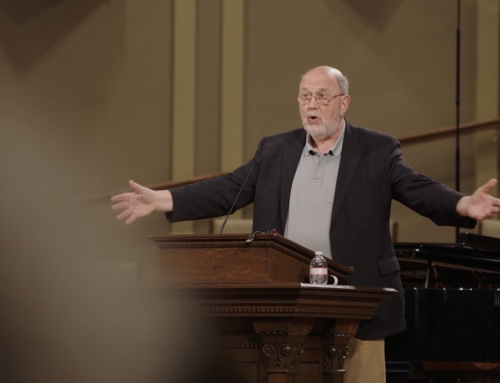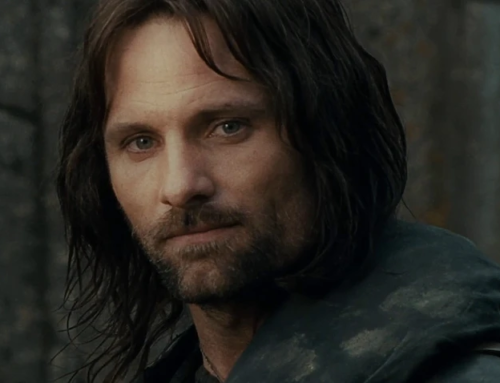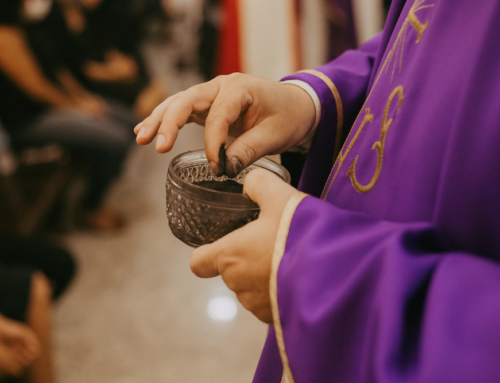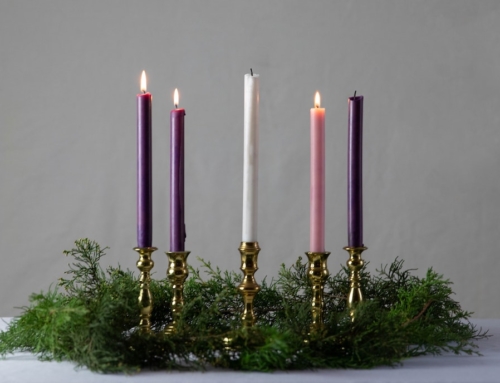This will be a Lent like no other. Last Lent we plunged into our first lockdown, unimaginable until it was forced upon us. We then supposed, as we struggled through Easter and Pentecost, that it couldn’t last much longer. But here we are again – and with horrible statistics of suffering and loss. And we turn, perhaps even more urgently, to the gospel message, the announcement of good news through the horror of Jesus’ death, in the dogged hope that it will speak afresh to us at such a time as this. The multiple sorrows and frustrations of this last year – bereavement, prolonged sickness, and a cold, nagging fear – sustain that sense of an urgent context. If we can’t preach the cross at a time like this, when can we?
But the meaning of Jesus’ death is vast and dark. Preaching about it is never easy. It shouldn’t be. If we imagine we can capture the cross in a simple formula, that just shows we haven’t caught up with the full biblical picture in which many strands come rushing together. That itself presents an ongoing challenge to the preacher or teacher, on top of the struggle we all now face, that of speaking into a microphone in a room by ourselves – as I’m doing now – rather than making real eye contact with our hearers. After all, the meaning of the cross is about the outflowing, generous love of God; so the act of communicating that message, whether in the pulpit or in pastoral conversation, ought itself to embody that love through direct personal communication, rather than through cameras and screens. But we are where we are. In this dark time, we must pray that the light which shines from the cross will enable us to find our way into what we need to say, and what our congregations need to hear.
I said just now that many strands converge in the biblical picture of the cross. The story of Jesus, focused particularly on his death and resurrection, is like a great, deep river into which many different streams have flowed, carrying the silt and smell of their own particular journeys. The primary texts are the four gospels themselves, and they don’t give us a theory, they give us a story. I have argued elsewhere that we have to get the story right if we are to understand what theologians sometimes talk about in terms of ‘models’ of atonement. I have spelt that out in more detail elsewhere.
In this first session I want to bring together two themes which have become very important for me in recent years – important at a personal level as well as in academic work. The first, alluded to in today’s title, is that of ‘Broken Signposts’ which I expound in a recent book with that title. The second is the great, but often unnoticed, biblical theme of ‘the coming of God’. So much western Christianity has been concerned about how we humans find our way to be with God, but the Bible is far more concerned with how the creator God fulfils intends and promises to come and be with us. And these two themes – the broken signposts and the coming of God – converge powerfully in the biblical story of the cross.
Broken Signposts and the Cross
Let me explain what I mean by ‘broken signposts’. There are several features of our human life and experience—common to more or less all people and cultures – which seem to point beyond themselves, to the meaning of life, and perhaps to God himself. One way of preaching through Lent might be to take these one by one and explore what happens if we treat them as signposts and follow where they seem to point – and then watch, in each case, for the dark twist at the end of the story.
I have worked with seven such signposts. No doubt there are many more but these are central.
The seven signposts I’ve worked with are Justice; Love; Spirituality; Beauty; Freedom; Truth; and Power. We all know these matter. Sometimes people try to ignore one or more of them but it usually comes back to bite you. Think of socialist republics building brutalist housing blocks and then wondering why the quality of life plummets; or think of those political leaders who tell lies all the time and thereby chip away at the fragile foundation of trust undergirding their societies.
These things – justice, truth, beauty and so on – are built into our humanness. You don’t have to teach people that Justice matters. Children in the playground say ‘That’s not fair’, without ever having studied moral philosophy. When it comes to Spirituality, for the last 300 years many in our culture have tried to do without it, culminating in atheist scepticism, but other things creep in to take its place. The Romantic movement sidelined ‘the sacred’ and substituted ‘the sublime’. Civic buildings begin to function as churches. Did you notice how Americans were speaking of the Capitol building in terms of a ‘shrine’, ‘sacred precincts’, ‘hallowed halls’ and so on? We may try to avoid these foundational impulses but they will still be there.
What do we do with these deep instincts? Many people have argued that they actually point us to God. The reason we instinctively love justice, value beauty, long for freedom, and so on is (some will say) that these are implanted in us by the God in whose image we are made. We can therefore argue from these instincts up to God himself.
Now that is fine up to a point . . . but only up to a point. Here’s the strange thing: we all know these things matter but we all mess them up. Take Justice. In our personal lives, we all want justice; if there’s a burglary we want police and law enforcement. But when we ourselves slide on to the wrong side of the law we somehow hope we’ll get away with it. In international relations every country believes in Justice – until its own interests are at stake. And so on.
Or take love itself, and relationships more broadly. We all know that they matter enormously. But we all mess them up. We hurt people we love, and we are hurt by them. We suffer what Shakespeare called ‘the pangs of diseased love’. And the very best of relationships end in a graveyard. The day I was drafting this talk was the anniversary of the death of a close friend. I am still in touch with his widow who has now spent six years coming to terms with the best thing in her life, for which she remains deeply grateful to God, coming to an end.
We could go on. Beauty brings meaning and depth and power into our lives. But the sunset fades into darkness. The smile of the child turns slowly into the cynical sneer of the disillusioned adult. The music stops. What about Freedom? As we know, it’s often purchased at the cost of someone else’s slavery. Power is necessary to get things done, but the old cliché about power tending to corrupt and absolute power corrupting absolutely holds true. And as for Truth – well, we all know it matters, and especially at this time of Pandemic. But we’ve all learnt that truth-claims might just be power-claims in disguise. Phrases like ‘fake news’ and ‘alternative facts’ now threaten everything from public health to democracy itself.
So what are we to say? Are these seven signposts all telling lies? Do we have to conclude, with Jean-Paul Sartre, that life is just a sick joke? That the signposts which looked as if they might point up to God are systematically deceiving us?
In all my years of churchgoing I don’t think I ever heard sermons on justice, spirituality, beauty, or power. Freedom, occasionally; truth; perhaps; love, well, yes, but not in the way I’m coming at it here. But all these seven are picked up in scripture, not least in John’s gospel, and not least in the story of Jesus going to the cross. When Jesus stands before Pontius Pilate in John 18 and 19, they argue about kingdom, truth and power. The trial takes place at Passover, the Freedom-festival, and it’s supposed to showcase the legendary Roman Justice. John’s overall heading for the entire scene, five chapters earlier, highlights yet another of our themes: Having loved his own who were in the world, he loved them to the end. John is telling us, woven deep into his narrative, that as Jesus goes to the cross these are precisely the issues that are at stake, the issues that we all know really matter in real life – love, justice, freedom, truth, power. And if we think John’s gospel is not also about spirituality and beauty then we have indeed forgotten how to read.
But what happens in this amazing scene? We watch as Jesus goes to the cross, and we see the seven signposts which (to begin with) look as though they might be pointing up to God; and we find that one by one they fail – just as they do in our personal and public lives.
Justice? The Roman empire prided itself on justice, but Pilate’s judgment is pulled and pushed this way and that by political interests and threats: ‘If you let this man go, you are not Caesar’s friend’. That has quite a contemporary ring: unless you call this one right, you may live to regret it.
Love? Jesus washes the disciples’ feet, and calls them his friends; but Judas betrays him, Peter denies him, they all run away. Love, like justice, fails just when we want it to win.
Spirituality? The water of life is a major theme earlier in John, and now, terrifyingly, Jesus declares ‘I’m thirsty’. Back in John 12 we have a Gethsemane-like moment: ‘Now is my soul troubled’: the easy commerce between Father and Son is shaken to the core.
Beauty? The beauty of new creation, shining out in John’s gospel from the early days in Cana of Galilee all the way to the upper room, is snuffed out on Golgotha.
Freedom? Passover is stood on its head as a murderous brigand is released and Jesus dies in his place.
Truth? Pilate just sneers. ‘Truth? What’s that!?’ We are the empire. We make our own truth here.
And power? – well, Pilate boasts that he has the power to have Jesus either released or killed. Jesus comments, remarkably, that God has indeed given Pilate that power, but that it comes with severe responsibility.
So throughout the story we see what’s happened to our seven signposts. As I said, you could quite easily construct a series of sermons looking at each one and following it through the story. I’d be inclined to keep Power for Easter morning, perhaps looking at Love on Palm Sunday, and arranging the other five to lead up to those. These, remember, are the signposts within human culture – the things etched deep into our hearts and imaginations – which should have provided clues to the meaning of life, and perhaps even signposts pointing up to God the creator himself. And we see what’s happened. One by one they are trampled upon, twisted, distorted, snuffed out. It’s almost as though John is inviting us to look at these signposts one by one and to watch as they fail to deliver.
Or do they?
Here is the twist – the extraordinary moment which I think helps to explain the power of the cross, of the message of the cross, from that day to this. The story of Jesus as he goes to the cross is the story we all know: the story of what happens when our vision of the world and of ourselves come crashing down. Jesus comes to the place, not where the signposts originally appear to be pointing, but where they have collapsed. The noble dream of justice appears to point up to God; John’s story of justice perverted points to Jesus on the cross. The powerful dream of love appears to lift us up to God; John’s story of the failure of the disciples’ allegiance points to Jesus on the cross. And so on. Our post-enlightenment culture is based on the quest for truth, real truth, solid truth you can bet your life on. John’s story of Jesus claiming to tell the truth and Pilate sneering and sending him to his death is the archetypal postmodern moment: we’re in charge of truth here, thank you very much.
And this I think is why, paradoxically, the story of Jesus’ crucifixion carries such power to this day. This is why paintings of the crucifixion continue to draw people in to a reality they can’t fully explain. It’s why the great Passions of Johann Sebastian Bach are still such life-changing realities in our culture. Even those – perhaps especially those – who have little or no knowledge of the great theories about the atonement can still be swept off their feet by this story, because it is, in this sense, the story we all know, the story of how our best intentions and aspirations let us down, how our dreams are crushed by an unsympathetic reality. In this story, even if we can’t really say why, we find that the God who we might have hoped would meet us in the place to which justice, love, freedom and truth had pointed has instead come to meet us in the place where justice, love, freedom and truth were denied and trampled upon. Our place. Our broken place. Our broken world.
You see what’s happened? A certain kind of ‘natural theology’, growing out of eighteenth-century human arrogance, has hoped to be able to find a way to God without any need for God to reveal himself to us. But the gospels, particularly John’s gospel, offer us a different kind of ‘natural theology’: a story, fully ‘earthed’ in the historical reality of our world, of a God who comes to meet us, not at the top of a ladder we can construct, but at the bottom of the heap, the place of broken hopes, broken dreams, broken signposts. As the hymn puts it, thinking of the foot washing scene in John 13: ‘We strain to glimpse your mercy seat, and find you kneeling at our feet’.
So my first point in this first talk can be summed up like this. There are many aspects of human life, across times and cultures, which really do seem to point up to God. But history and experience suggest that these signposts are broken. They remind us, instead, of the chaos and tragedy of our world. But when we come back to the stories of Jesus going to his death, we find that Jesus comes precisely to the point where the broken signposts had ended up. There, in real human history, we find a God doing what no other God had ever dreamed of doing: coming to the place of human failure and brokenness to meet us right there. And John’s story insists that this meeting was the ultimate act of love. Of God’s love. I learned long ago that wonderful poem by the first world war poet Edward Shillito, ‘Jesus of the Scars’. Contrasting Jesus with the great pagan gods, he writes:
The other gods were strong; but thou wast weak;
They rode; but thou didst stumble to a throne.
But to our wounds, only God’s wounds can speak;
And not a god has wounds, but thou alone.
That points us to the second half of this talk. But before we get there let me remind you of the well-known illustration of the way in which Jesus’ crucifixion can get through to hard hearts without any theological explanation or doctrinal substructure. The late cardinal archbishop of Paris, Jean-Marie Lustiger, used to tell the story of the three boys who played a trick on the local priest, by going into the confessional and ‘confessing’ all kinds of wild stories. The first two ran away, and the priest wasn’t fooled. He gave the third boy – who happened to be Jewish – a penance to perform. He told him to go to the far end of the church, to look up at the large crucifix hanging there, and to say to the figure on the cross, ‘You did all that for me – and I don’t give a damn.’ He told him to do it three times. Off went the boy: this was all still part of the game. ‘You did all that for me,’ he said, ‘and I don’t give a damn.’ Then he said it the second time. And then . . . he couldn’t say it the third time. He broke down, and left the church a changed person. ‘And the reason I know that story,’ the Archbishop would conclude, ‘is that I was that young man.’ He spent the rest of his life following, and serving, the Jesus who had come to the place of brokenness, of failure, of lies. The Jesus who had loved him to the end.
The Coming of God
All this points to a great biblical theme which, like many things in scripture, I suspect we both partly know and partly forget. But it reinforces all that I have just said; and it seems to me to be central to the New Testament, particularly to John’s gospel which I’ve been referring to so far. I would love to think that some of you might be able to weave this into your Lenten and Eastertide preaching, where it belongs at the centre.
The theme is this. Most western forms of Christianity, Catholic and Protestant, liberal and conservative, have assumed that the ultimate aim of being a Christian is, as the phrase goes, ‘to go to heaven when you die’. In terms of God and ourselves, God is in his domain and we hope to go and be with him one day forever. But the message of the Bible is that God the creator longs to come and make his home with his people. The final scene in the Bible is not – despite the powerful portrayal in mediaeval mystery plays and so on – a matter of saved souls going up to heaven, but rather of the new Jerusalem coming down from heaven to earth, so that ‘the dwelling of God is with humans’. As I look back through churches where I’ve worshipped and worked over a lifetime, I realise that most of them, no matter what tradition they’ve stood in, have assumed the going-to-heaven narrative. It’s built into many prayers and liturgies and, not least, hymns. Think of all those nineteenth-century Christmas carols: ‘and fit us for heaven, to live with thee there’, and so on – whereas the point of Christmas is that he has come to live with us here!
This affects many bits and pieces of what we say. I once had to advise on a cartoon movie about Jesus, which was brilliant in many ways – until it came to the last scene, the Ascension, which had the young heroine looking at Jesus going into heaven and someone saying ‘and one day we’ll go there and be with him’. Fortunately we were able to get that changed. After all, the angels in Acts 1 don’t say ‘hang around and do stuff and then you can go to be with him’; they say, ‘He’ll be back’. And please don’t translate that into the unbiblical idea that Jesus is coming back to scoop us up and take us back to heaven! Paul insists in Ephesians 1 that God’s plan has always been to sum up in Christ all things in heaven and on earth. He comes back to heal, transform and to reign in a world flooded with justice, peace and love. With God’s own presence.
This theme, of God coming to bring all things in heaven and earth to a rich unity, has deep roots in Israel’s scriptures. In Genesis God makes a heaven-and-earth world, with the Image of himself at its heart; this, in other words, is a cosmic temple. This is where God himself intends to live, to be present with his human image-bearers. And when things go wrong, God doesn’t plan to rescue wicked humans from creation to go and be with him somewhere else. That is, ultimately, the teaching of Plato and other philosophers, and the church has often bought heavily into it, but it’s not what the Bible’s about. (That is why people in that tradition had to resort to allegory, because the Bible didn’t seem to be saying what they thought it ought to be saying, just like the first-century philosophers, who allegorized Homer because they were shocked by his portrayal of how the gods behaved.)
No: when things go wrong, God calls a people, Abraham’s family, and once he’s rescued them from Egypt he comes to live in their midst, in the Tabernacle. The point, as many scholars have seen but in my experience few clergy have picked up, is that the Tabernacle in the wilderness, and then the Temple in Jerusalem, are designed as small working models of new creation. They are heaven-and-earth structures. They are designed to anticipate what the creator God intends to do in the end, which is to remake the world – not to abandon it to chaos or entropy – and to come and live in it himself. God’s presence in the Tabernacle and then the Temple – which, by the way, are the high points of the theme of ‘beauty’ in the Bible – anticipates the time, promised in passages like Isaiah 11 or Psalm 72, when creation will be restored, with justice and peace at last triumphant, and God’s glory will fill the whole earth, as the waters cover the sea. St Paul picks this up in several passages; God, he says, will be ‘all in all’. John’s Prologue invites us to read the whole story and glimpse this indwelling glory all through.
This theme of new creation, and of God himself coming to fill it all with his own presence, was at best muted in the Middle Ages. It wasn’t really retrieved by the Reformers. It hasn’t been prominent in much western Christianity to this day. But my point to you now is twofold. First, this is the theme at the heart of John’s Gospel, and particularly as Jesus goes to his death. Second, therefore, this is the theme we urgently need as we seek to preach wisely about Jesus’ crucifixion at this time of darkness and fear in our national and global life. The gospel story is the story of the God who doesn’t stay above the pain and the sorrow of the world. His intention from all eternity to come and live in his own world with his human creatures was gloriously and shockingly fulfilled when he came to the place of pain and sorrow, of justice denied, power corrupted, truth sneered at and love trampled upon. Our place.
You see, John’s gospel, echoing both Genesis and Exodus, insists that ‘the Word became flesh and tabernacled in our midst, and we gazed upon his glory’. No translation actually says that of course, because it would be incomprehensible ; but the word is eskenosen, meaning ‘pitched his tent’. Jesus himself is the ultimate Tabernacle, the true Temple. ‘He spoke,’ says John in chapter 2, ‘about the Temple of his body’. The Temple is where God comes to dwell with his people. That theme haunts all four gospels, but in John it is clearest: as we follow the story through Jesus fulfils the Jewish festivals and finally, in his last coming to Jerusalem, speaks plainly to his followers in the language of mutual indwelling – think of the vine and the branches, and so on – whose meaning is found in the theology of the Temple itself. Heaven and earth come together in him. John is saying that we see, in him, the fulfilment of the creator’s intention from the very start, and particularly the fulfilment of the promises to Israel of which the Tabernacle and the Temple were great advance signs. The point of the story is that this is what it looked like when God came to dwell with his people as he had always intended. And if all the signposts that should have pointed to him were broken, God will come to the place of those broken dreams.
I suspect that One of the reasons why this is not how many western Christians have thought about things is not simply the powerful pull of the going-to-heaven tradition. It is that thinking of things this way round demands that we think very differently about God himself. But this, I suggest, is urgent and vital right now, particularly as we pray and preach the message of the cross. Not only because it’s a matter of getting our theology the right way up; also, because this is the word we need right now in our present states of distress.
John’s gospel states it starkly at the end of the Prologue: Nobody has ever seen God, but the only-begotten God, close by the father’s heart, has made him known. That last phrase is literally ‘has exegeted him’ – has laid bare the truth of who God really is, has been ‘the human face of God’, the living presence of the loving God. So much would-be Christian thought has begun with an idea of who God might be – often culled from the great philosophers rather than scripture – and then has tried to fit Jesus into that frame. John insists that this is the wrong way round. You only know who the true God is when you look hard at Jesus and revise your initial opinions around that. Don’t even talk about God incarnate until you’ve done business with the actual incarnate God. The trouble is, of course, that if Jesus really was and is the living embodiment of Israel’s God – as the whole New Testament insists – then we have to face those extraordinary passages like John 12, and the Gethsemane scene in Matthew and Mark, where we find in the Father-Son relationship the struggle for faithful obedience which is part of the cost of love itself. As we watch Jesus walking around in Galilee and Jerusalem in John’s Gospel, and ultimately dying on the cross, the victim of twisted justice, corrupt power, and failed love, we are invited to look with awe at the generous, self-giving love of the living God himself.
However we cope with this theologically, this is where everything should come together both pastorally and in our preaching. Our task is to help people discover that the dark journey they’ve been travelling leads to the foot of the cross, and that there they can meet the God who has come there to meet them. You see, some teachers have tried to make out that the Pandemic, and the chaos that has followed around the world, is a punishment from God because of various sins that various people have committed. That demands a very selective reading of scripture, and Jesus himself in John’s gospel stands out against it. In chapter 9, his followers ask him about the man born blind: was it this man who sinned, or his parents, that this happened? No, says Jesus, that’s the wrong question: this is so that God’s glory might shine out in him. That is the keynote of John’s gospel, and particularly his story of Jesus going to the cross.
Yes; we can develop all sorts of theories. I will come to those in the other two talks. But at the heart of the New Testament picture of Jesus’ crucifixion – and I suggest it should be at the heart of all our preaching of the cross this year in particular – is the story of the God who comes to pitch his tent in our midst and to reveal his glory right there, the glory which is the glory of self-giving love. John’s gospel is not about a distant god playing puppets with his world and with humans. It is about God coming to the place where the world is in pain, where the personal and political and societal and particularly medical tensions have reached screaming point, and standing there to take the pain of the world into himself, to be with us in the midst of it all, and right there to reveal the glory of his self-giving love. We sang a few weeks ago, ‘The hopes and fears of all the years are met in thee tonight’. But in a few weeks from now we ought to be saying, with awe and gratitude, ‘the pains and tears of all the years are met in thee this night’. That is what John’s story is all about.
And that is why, to tie together the two halves of this first talk, I commend to you this way of doing a strange kind of ‘natural theology’, putting Jesus in the middle of the picture and watching how all the broken dreams and broken signposts of human life end up pointing down to him – and, thereby, to the one true God, revealed as the God of utter self-giving love as he gives himself for the life of the world. Our world just now is reeling from so many broken dreams, from the schooling prospects of our children in lockdown to the terrible plight of so many refugees, to the persecution of minorities in many countries . . . and right home to the horrible rising tide of COVID deaths in our homes and down the street. We think of the exhausted and crushed health-care workers struggling to cope. We think of political and scientific leaders desperately trying to find a way forward. This is indeed a dark time.
But the point of the ‘broken signposts’ illustration, and the point of John’s gospel as it retrieves the biblical theme of God coming to dwell with his people, is that this is precisely where God comes to meet us. God doesn’t wait for us to clean up our lives or our world. He comes down to the place where our hopes and aspirations have crashed to the ground. He comes in word and sacrament; yes. He comes in the life of prayer – and also in the weeping that may be part of that. Yes. But he also comes in the gentle care of nurses and doctors, in the kindness of neighbours and strangers, in the extra phone call or email, in the smile behind the mask, in the sympathetic dignity of funeral staff. Because – we haven’t explored this but it is obviously the other part of the same truth – what John says about Jesus he also says about the Spirit. What God did once-for-all, decisively, in Jesus, he applies to the needs of the world by the Spirit. The Word became flesh and tabernacled in our midst; and, through wise, humble human lives and loves, the Word becomes flesh again by the Spirit. The Spirit calls and equips us to be – perhaps to our own surprise – people of justice, love, spirituality, beauty, freedom, truth and – yes, even in the right sense, power: the power of God’s love, to speak peace and to bring a measure of healing and hope, in our preaching, our praying, our living, doing whatever we can to meet the needs of this horrible time.
How we make more complete sense of all this, putting together the message of the cross, we will discuss in the other two talks. But here we are at the centre of the gospel message. In this dark time, the cross, planted in the midst of this world’s sorrow and fear, shines out with the light of love and hope. Our task, this Lent, is so to enter into that mystery in our own prayer and reflection that in our ministries, and not least in our preaching, we may draw others into that light.
Latest posts by N.T. Wright (see all)
- A Preview of Prof. Wright’s Teaching on Acts - May 11, 2023
- The Music of New Creation: Holy Week Eucharist Reflections from N.T. Wright - April 14, 2022
- Hope Amid the Broken Signposts - February 17, 2021







